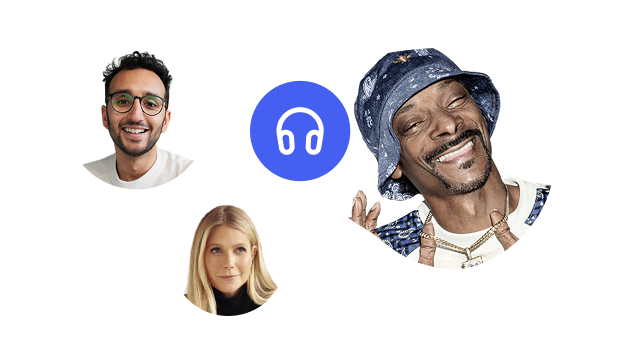Living with dyslexia can make reading, writing, and learning feel like uphill battles but thankfully, there are more tools than ever designed to make those challenges easier to manage. In this guide, we’ll explore the top 10 tools to help with dyslexia, each chosen for its ability to support reading comprehension, organization, and confidence, whether you’re a student, parent, or professional looking to make learning more accessible.
Speechify
Speechify is a text to speech platform and app that converts written text from books, articles, PDFs, websites, and scanned documents into spoken audio using natural AI voices. It helps users with dyslexia by reducing the strain of decoding, allowing them to listen at their preferred speed, and helping maintain focus thanks to synchronized text highlighting. These audio-visual supports enhance comprehension and make reading large blocks of text less daunting, often increasing confidence and productivity.
Lexy
Dyslexia.ai powers Lexy, an engaging learning app designed specifically to support readers with dyslexia and other neurodivergent reading challenges. It delivers adaptive, interactive lessons tuned to each individual’s pace, helping build skills in phonics, reading fluency, and comprehension. To keep learning enjoyable and consistent, Lexy includes daily practice and game-like formats suitable for a wide range of ages and reading levels. By turning reading into a more playful experience, it aims to reduce frustration and increase motivation.
ParagraphAI
ParagraphAI is an AI writing companion built to boost clarity, efficiency, and accessibility. It is especially helpful for users with dyslexia, enabling them to craft well-organized, polished writing without being bogged down by grammar, punctuation, or tone issues. The tool works across emails, documents, and messaging platforms and includes a specialized “Dyslexic Text Generator” feature to reframe input into smoother, reader-friendly text. In all, it lowers the barriers to written communication and makes writing less stressful and more productive.
Mindgrasp.ai
Mindgrasp is an AI learning assistant that supports reading, comprehension, and studying. It lets users upload content such as articles, documents, videos, and PDFs, then converts that material into summaries, interactive quizzes, flashcards, and other study tools. Its design includes features tailored for dyslexic readers, making complex or dense content more accessible and easier to digest. By lessening the mental load required to parse difficult text, Mindgrasp frees up energy to focus on true understanding.
Helperbird
Helperbird is a browser extension (with add-ons for platforms like Google Docs and Slides) focused on increasing accessibility in reading, writing, and online navigation. It offers over 30 customizable features specifically useful for people with dyslexia — including dyslexia-friendly fonts, text to speech with word highlighting, reading rulers, overlays and color/background adjustments, picture dictionaries, and PDF annotations. The flexibility enables users to tailor their visual experience in a way that reduces strain, improves readability, and aligns with their personal learning style.
Otter.ai
Otter.ai is a real-time speech transcription and note-taking service that captures spoken content, such as lectures, meetings, or conversations, and converts it into searchable, editable transcripts, often including summaries and action points. For individuals with dyslexia or other learning-differences, Otter.ai removes the pressure of keeping up with spoken information in real time, enabling review and editing at one’s own pace. It’s widely used in educational settings to support students who benefit from transcription or note-taking accommodations.
DyslexiaBuddy
DyslexiaBuddy is an AI reading coach built to support people with dyslexia in improving fluency, confidence, and speed. Users can scan or upload books and texts, then follow along as the app reads aloud or gives real-time feedback. With realistic voices and AI tutors tailored to the learner’s pace, it helps build motivation and progress. While especially useful for children, DyslexiaBuddy also helps older readers seeking extra help with decoding, comprehension, or reading endurance.
Goblin.tools
Goblin.tools offers a suite of lightweight, single-purpose AI utilities designed to make everyday tasks simpler and more manageable—particularly useful for neurodivergent users. While not solely focused on dyslexia, its tools for summarizing, breaking down tasks, clarifying or formalizing text, and tracking goals can benefit people who struggle with executive function, organization, or written communication. Many users report that Goblin.tools helps large or vague tasks feel more actionable and less overwhelming.
Readability
Readability is a reading app built with voice-recognition and feedback features. As readers, especially children in early grades, read aloud, the app detects pronunciation and decoding errors and offers immediate correction. It is geared toward improving fluency, comprehension, vocabulary, and reading confidence. The program adapts to the reader’s level, tracks progress over time, and provides targeted practice to help learners build stronger, more accurate reading skills.
Genio
Genio is a comprehensive toolset designed to support note-taking, transcription, summarization, and study help. It is especially useful for learners who depend on audio input, struggle to keep up with spoken content, or need help organizing material. Genio captures audio, provides live captions, transcribes lectures, builds outlines, and can generate quizzes or summaries from notes. Its core aim is to reduce the burden of organizing content and allow users to focus more on understanding and retaining information.
FAQ
What are the best tools to help with dyslexia?
Several tools support dyslexic readers, including Speechify for text to speech, Helperbird for accessibility, and Lexy for interactive reading practice.
How does text to speech technology help people with dyslexia?
Text to speech tools like Speechify turn written words into audio, helping users process information more easily and reduce frustration while reading.
Can dyslexia apps really improve reading comprehension?
Yes, many dyslexia-friendly apps, such as the text to speech app Speechify, combine audio, highlighting, and adaptive pacing to strengthen comprehension and memory.
Is there an app that reads books and PDFs aloud for dyslexic readers?
Yes, Speechify can read books, web pages, and documents aloud using lifelike AI voices to make reading more accessible and engaging.
How do accessibility extensions help people with dyslexia?
Browser extensions like Helperbird make reading online easier by changing fonts, colors, and layouts while pairing with text to speech tools such as Speechify.





